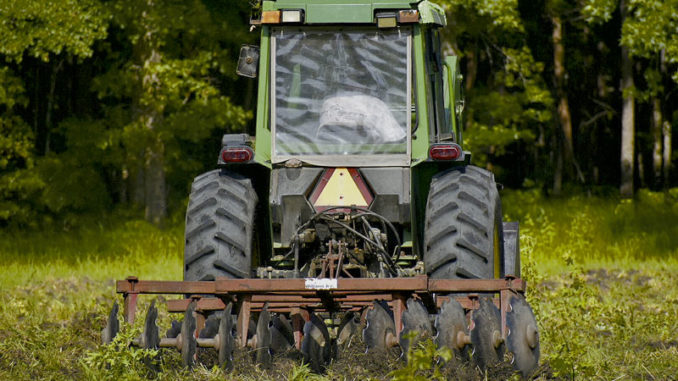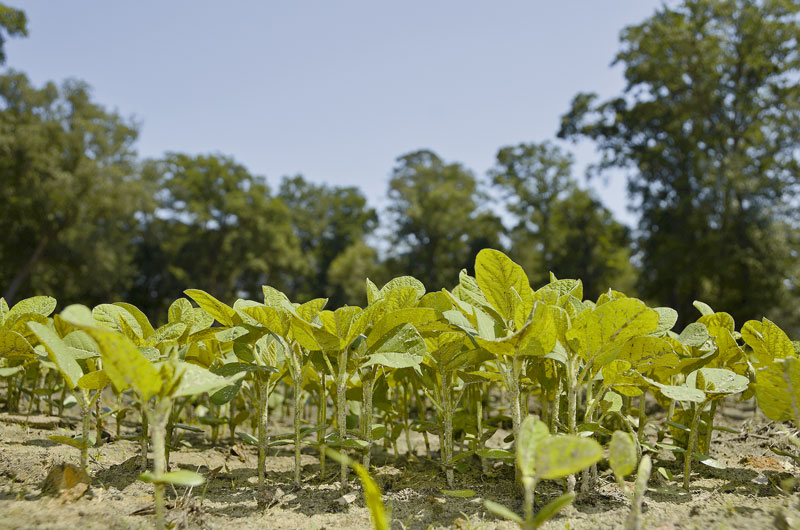
For most hunters in the Carolinas, deer season is up and running in one form or another, either under a primitive-weapons option or a regular firearms season, October offers hunters an opportunity to take down Bambi right when the seasonal cooldown takes effect.
While many food plots are flourishing and being hammered by deer, some hunters are still behind the 8-ball, trying to get their ducks in a row to have a hot food source for the season. It is not too late to plant something that will quickly bring deer in by the dozen.
Whether considering time, energy or flat-out cash money, food plots are investments for hunters. The best plots result from forward thinking many months before the season with soil tests and a series of land applications over time. But life can get in the way, forcing some hunters to mobilize at the last minute. Luckily, they can quickly turn some dirt and plant a last-minute crop to get quick attention from the local villagers.
You can still prepare a quick kill plot, but there is no time for procrastination; seeds need to get buried now for the best opportunity to take advantage of the upcoming rut.
What to plant?
So, what is the best thing to plant? Each food-plot variety or seed mix will have a wide range of maturity schedules and a timetable for when deer prefer to eat them. Obviously, something that takes 120 days to mature before the first frost is probably going to be out for an October planting, unless the chosen crop is highly attractive during the days just after planting and the growth/palatability meets the short-term objectives.
Bottom line, the objectives of the plot should be considered, and most fall plots are designated as kill plots or to attract deer into an area. Even when some plots are intended for short use, some plot species can withstand heavy browsing and flourish through the cooler months, offering a long feeding opportunity.
If a hunting plot is the immediate objective — and it normally is when plots are getting planted in October — there are more options out there than most hunters can imagine for a late-season planting. In fact, plantings that struggle with premature browsing are excellent candidates for October planting if the user understands the probable results.
Legumes work
Most legumes can be excellent choices because they are typically highly palatable as soon as they erupt from the soil’s surface. Austrian winter peas, iron clay peas (or cow peas), and soybeans are immediately palatable and highly attractive to deer at any time of year. Deer absolutely love these plants, but they will barely see the light of day because; deer will hammer them as soon as they sprout. If the objective is to grow them out to maturity, that’s a bad thing, but if the objective is to hunt over something deer love and will eat as fast as possible, that sounds like a good place to hunt over in late October.
October options
A plot of peas and soybeans can be seeded at a high rate because of the short duration of expected use. Just be ready when they are planted, because the deer will show up with a fork and knife as soon as these green sprouts emerge. If these plants are able to survive and withstand heavy browsing, the forage is full of protein and highly palatable, so they can provide an extended forage base.
Another option, and probably a longer-lasting plan, is cereal grains like triticale, wheat, rye and oats. They are highly attractive shortly after planting and can provide forage throughout the winter, even when temperatures plummet to seasonal lows. And they can withstand heavy browsing pressure as well.
The last and best option is to plant a mix of all of the above: a bag or two of peas and beans and then a bag of cereal grains. These mixes can provide immediate use, and anything that can make it through the heavy browsing and cool weather will provide a longer-lasting forage base.
These October plantings may not provide a field of dreams, with chest-high soybeans and peas, but hunters can sure count on an attractive food plot to overlook when the rut is in full effect.
For best results, a nearly neutral pH is preferred, where the food plot’s rapid growth can be rocket-fueled with fertilizers loaded with heavy concentrations of nitrogen, phosphorous and potassium. The closer to a neutral pH, the more effective fertilizers can be. A fertilizer heavy to nitrogen should be used for these types of plots to fuel immediate growth, regardless of whether legumes are being planted.

Restrict acid buildup in soil
Most forest soils in the Southeast are naturally acidic, and farming practices can also lead to acidification. However, fertilizer is a necessary step in the farming business, and for landowners looking to improve the growth of their prized food plots. In most food plots, a near neutral pH is preferred for nutrient conversion and optimum growth.
Over time, prepared soils in fields can become more acidic from rainfall leaching, organic matter buildup and intensive agriculture practices to include addition of certain fertilizers.
Acidic soils are counterintuitive for planting most food-plot varieties. Soils are able to convert fertilizers into usable compounds when soil pH is approaching 7.0, a neutral pH. That’s not to say lower pH levels can’t produce good crops, but a higher pH provides a more accepting environment for conversion of critical elemental compounds.
Landowners who plant food plots can reduce acidification by using fertilizers that don’t acidify soil as much as others. Some can even contribute towards alkalinity and counteract the acidity of other fertilizer compounds.
Fertilizers are primarily made up of nitrogen, phosphorus and potassium, and a long list of necessary micro-nutrients. For starters, potassium fertilizers have little effect on pH unless combined with an acidic mix of other fertilizer compounds. Nitrogen on the other hand, can have a dramatic effect on pH.
Nitrogen is a critical component to most plant-growth potential, and all plants need nitrogen in one form or another. Nitrogen comes in two basic forms: nitrate-based or ammonium-based fertilizers. Nitrate-based fertilizers, such as calcium nitrate, are the least acidifying among nitrogen fertilizers. Ammonium-based fertilizers, such as ammonium nitrate or ammonium sulfate, have the greatest potential to lower the pH in soils when used over time.
Phosphorus will have a lower impact on soil pH in a negative way, unless phosphoric acid is used. Typically, most phosphorus used for agriculture production originates from phosphorus rock and is slow to act unless mixed with phosphoric acid, aka triple superphosphate. But triple superphosphate can contribute to acidifying the soils. A better option can be to use calcium phosphate, which is more soluble in soil and can actually increase pH under certain conditions and in certain soil types.
Lime applications can always be used in the offseason to offset acidic conditions, but proper soil pH alteration can be a slow process, and anything that can prevent acidification can always help. When choosing fertilizers for fall or spring applications, try to choose mixtures that reduce any acid buildup in the soils.




Be the first to comment